-
 Bitcoin
Bitcoin $117300
1.93% -
 Ethereum
Ethereum $3866
5.21% -
 XRP
XRP $3.109
3.81% -
 Tether USDt
Tether USDt $1.000
0.01% -
 BNB
BNB $781.5
1.52% -
 Solana
Solana $173.0
2.95% -
 USDC
USDC $0.9998
0.00% -
 Dogecoin
Dogecoin $0.2181
6.31% -
 TRON
TRON $0.3403
0.93% -
 Cardano
Cardano $0.7683
3.91% -
 Hyperliquid
Hyperliquid $40.08
5.09% -
 Sui
Sui $3.742
7.38% -
 Stellar
Stellar $0.4152
4.69% -
 Chainlink
Chainlink $18.40
10.03% -
 Bitcoin Cash
Bitcoin Cash $580.6
2.21% -
 Hedera
Hedera $0.2543
4.25% -
 Ethena USDe
Ethena USDe $1.001
-0.01% -
 Avalanche
Avalanche $22.94
3.52% -
 Litecoin
Litecoin $121.8
2.24% -
 UNUS SED LEO
UNUS SED LEO $8.955
-0.41% -
 Toncoin
Toncoin $3.330
3.03% -
 Shiba Inu
Shiba Inu $0.00001270
2.97% -
 Uniswap
Uniswap $10.34
6.42% -
 Polkadot
Polkadot $3.805
3.86% -
 Dai
Dai $1.000
0.01% -
 Bitget Token
Bitget Token $4.429
1.80% -
 Cronos
Cronos $0.1495
4.65% -
 Monero
Monero $255.6
-9.08% -
 Pepe
Pepe $0.00001096
4.40% -
 Aave
Aave $282.9
7.85%
What is the risk reserve of OKX contract? How to distribute after liquidation?
OKX's risk reserve, funded by fees and liquidation profits, safeguards users' funds during futures and swaps liquidation, ensuring market stability and transparency.
May 05, 2025 at 05:07 pm
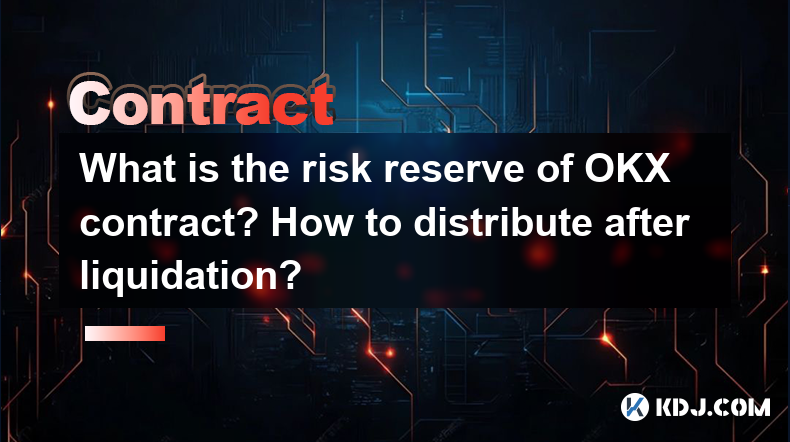
Introduction to OKX Contract Risk Reserve
The OKX contract risk reserve is a critical component of the OKX exchange's risk management system, designed to safeguard users' funds and maintain market stability. The risk reserve acts as a buffer to cover potential losses that may occur during the liquidation of futures and perpetual swap contracts. Understanding the risk reserve and its distribution post-liquidation is essential for traders to navigate the complexities of trading on OKX effectively.
What is the Risk Reserve on OKX?
The risk reserve on OKX is a pool of funds set aside by the exchange to manage the risks associated with leveraged trading. When traders use leverage to enter positions, they are essentially borrowing funds from the exchange. If a trader's position moves against them and they cannot meet the margin requirements, their position is liquidated. The risk reserve steps in to cover any shortfall between the liquidation price and the actual market price at the time of liquidation.
How is the Risk Reserve Funded?
The risk reserve is funded through several mechanisms:
- Trading Fees: A portion of the trading fees collected by OKX is allocated to the risk reserve.
- Liquidation Profits: Any profits generated from the liquidation of positions that exceed the necessary amount to cover losses are added to the risk reserve.
- Insurance Fund Contributions: In some cases, OKX may contribute to the risk reserve from its insurance fund to ensure it remains adequately capitalized.
The Liquidation Process on OKX
When a trader's position is at risk of liquidation, OKX initiates a series of steps to manage the process efficiently:
- Margin Call: The trader receives a margin call when their position's margin falls below the maintenance margin level.
- Automatic Liquidation: If the trader fails to meet the margin call, OKX automatically liquidates the position to prevent further losses.
- Risk Reserve Utilization: If the liquidation price is not sufficient to cover the trader's losses, the risk reserve is used to cover the difference.
Distribution of Funds After Liquidation
After a position is liquidated, the distribution of funds involves several key steps:
- Covering Losses: The primary use of the risk reserve is to cover any losses incurred during the liquidation process. If the liquidation price is lower than the market price, the risk reserve compensates for the difference.
- Returning Surplus: If there is a surplus after covering losses, this amount is returned to the risk reserve.
- Allocation to Insurance Fund: In some cases, any remaining surplus may be allocated to the insurance fund to strengthen the overall financial stability of the exchange.
Ensuring Transparency and Fairness
OKX maintains transparency and fairness in the management of the risk reserve through regular reporting and audits. Traders can access detailed information about the risk reserve's balance and its utilization through the OKX platform. This transparency helps build trust among users and ensures that the risk reserve is managed responsibly.
Impact on Traders
Understanding the risk reserve and its role in the liquidation process is crucial for traders. It provides a safety net that can help mitigate the impact of sudden market movements. Traders should be aware of the following:
- Leverage Management: Using appropriate leverage levels can reduce the likelihood of liquidation and the need for the risk reserve to intervene.
- Monitoring Positions: Regularly monitoring open positions and adjusting margin levels can help traders stay ahead of potential liquidations.
- Risk Management Strategies: Implementing effective risk management strategies, such as setting stop-loss orders, can help protect against significant losses.
Frequently Asked Questions
Q1: How often is the risk reserve audited?
The risk reserve on OKX is subject to regular audits, typically conducted on a quarterly basis. These audits ensure that the reserve is adequately funded and managed in accordance with OKX's risk management policies.
Q2: Can traders contribute to the risk reserve directly?
No, traders cannot directly contribute to the risk reserve. The risk reserve is funded through trading fees, liquidation profits, and contributions from the insurance fund, as managed by OKX.
Q3: What happens if the risk reserve is depleted?
If the risk reserve is depleted, OKX may use funds from its insurance fund to cover any remaining losses. In extreme cases, OKX may implement temporary measures to protect the platform's financial stability, such as adjusting leverage limits or pausing trading.
Q4: How can traders check the current balance of the risk reserve?
Traders can check the current balance of the risk reserve by visiting the OKX platform and navigating to the risk management section. OKX provides regular updates on the risk reserve's balance and its utilization to maintain transparency.
Disclaimer:info@kdj.com
The information provided is not trading advice. kdj.com does not assume any responsibility for any investments made based on the information provided in this article. Cryptocurrencies are highly volatile and it is highly recommended that you invest with caution after thorough research!
If you believe that the content used on this website infringes your copyright, please contact us immediately (info@kdj.com) and we will delete it promptly.
- Bitcoin Reserve, Gold Revaluation, Congress Considers: A New Era for US Financial Strategy?
- 2025-08-08 04:30:12
- KAITO's Momentum: Can It Reclaim Support Amidst Social Media Scrutiny?
- 2025-08-08 04:30:12
- Pi Coin's dApp and AI Potential: Building a Decentralized Future
- 2025-08-08 02:30:12
- Ruvi AI Takes the Lead: Outshining Dogecoin on CoinMarketCap
- 2025-08-08 02:50:12
- Cryptos Under $1: Is Ripple Still the King?
- 2025-08-08 03:50:12
- Cold Wallet, Bonk Price, ICP Price: Navigating the Crypto Landscape in 2025
- 2025-08-08 03:56:12
Related knowledge
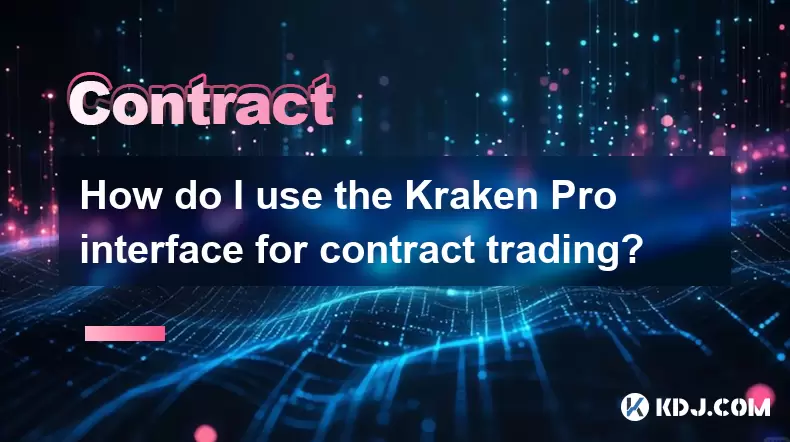
How do I use the Kraken Pro interface for contract trading?
Aug 08,2025 at 05:00am
Understanding the Kraken Pro Interface for Contract TradingThe Kraken Pro platform is designed for advanced traders who require speed, precision, and ...
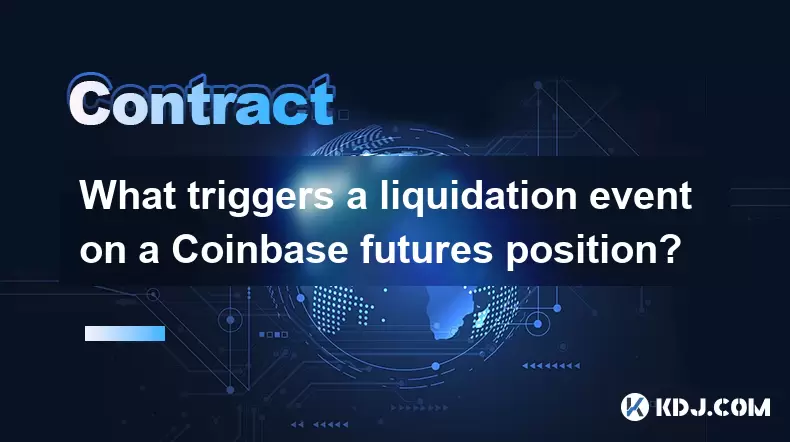
What triggers a liquidation event on a Coinbase futures position?
Aug 08,2025 at 01:15am
Understanding Futures Contracts on CoinbaseFutures contracts on Coinbase allow traders to speculate on the future price of a cryptocurrency, such as B...
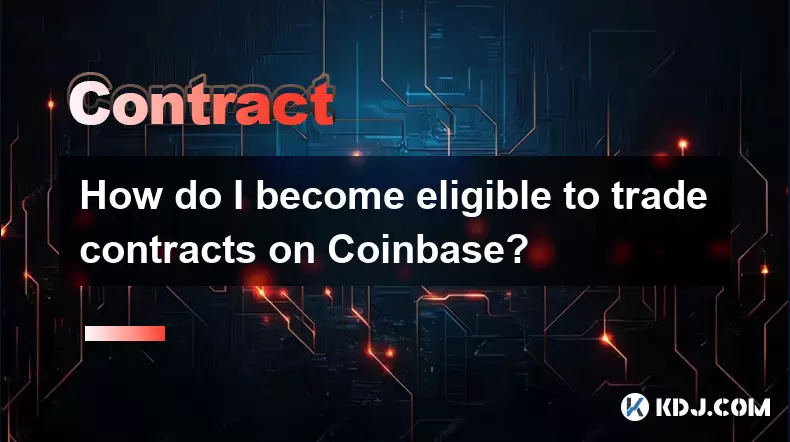
How do I become eligible to trade contracts on Coinbase?
Aug 08,2025 at 04:42am
Understanding Contract Trading on CoinbaseContract trading on Coinbase refers to the ability to trade derivative financial instruments such as futures...
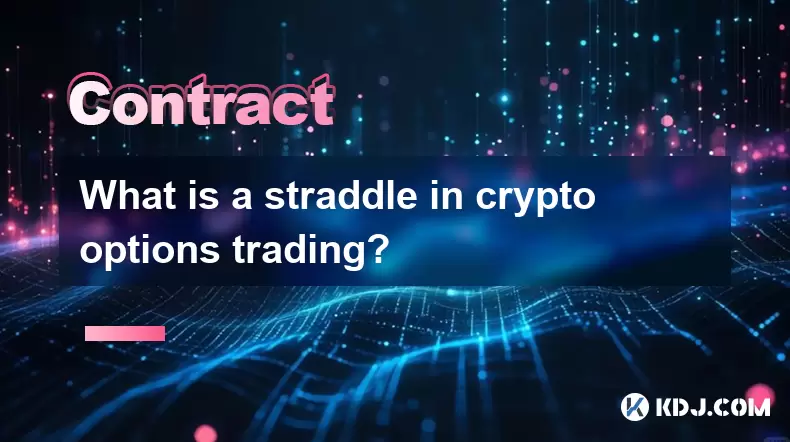
What is a straddle in crypto options trading?
Aug 07,2025 at 11:15pm
Understanding the Basics of a Straddle in Crypto OptionsA straddle is an options trading strategy used when a trader expects significant price movemen...
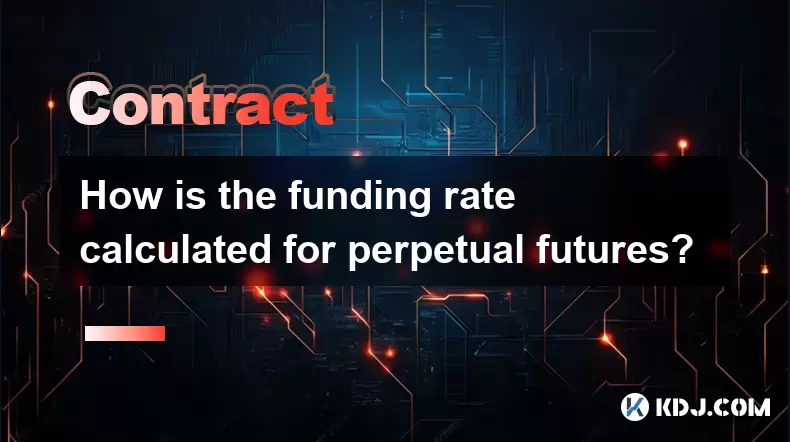
How is the funding rate calculated for perpetual futures?
Aug 07,2025 at 11:36pm
Understanding the Basics of Perpetual FuturesPerpetual futures are a type of derivative contract that does not have an expiration date, allowing trade...

What programming languages are used for smart contracts?
Aug 07,2025 at 06:07pm
Understanding Smart Contracts and Their Execution EnvironmentSmart contracts are self-executing programs deployed on blockchain networks that automati...

How do I use the Kraken Pro interface for contract trading?
Aug 08,2025 at 05:00am
Understanding the Kraken Pro Interface for Contract TradingThe Kraken Pro platform is designed for advanced traders who require speed, precision, and ...

What triggers a liquidation event on a Coinbase futures position?
Aug 08,2025 at 01:15am
Understanding Futures Contracts on CoinbaseFutures contracts on Coinbase allow traders to speculate on the future price of a cryptocurrency, such as B...

How do I become eligible to trade contracts on Coinbase?
Aug 08,2025 at 04:42am
Understanding Contract Trading on CoinbaseContract trading on Coinbase refers to the ability to trade derivative financial instruments such as futures...

What is a straddle in crypto options trading?
Aug 07,2025 at 11:15pm
Understanding the Basics of a Straddle in Crypto OptionsA straddle is an options trading strategy used when a trader expects significant price movemen...

How is the funding rate calculated for perpetual futures?
Aug 07,2025 at 11:36pm
Understanding the Basics of Perpetual FuturesPerpetual futures are a type of derivative contract that does not have an expiration date, allowing trade...

What programming languages are used for smart contracts?
Aug 07,2025 at 06:07pm
Understanding Smart Contracts and Their Execution EnvironmentSmart contracts are self-executing programs deployed on blockchain networks that automati...
See all articles

























































































